Hidden away deep inside one of Japan’s least explored regions, nestling between majestic mountains, and preserving an ages old tradition of living in harmony with the natural landscape, you’ll find Hachimantai.
Located in Honshu’s mountainous Northern Tohoku region, Hachimantai is home to some of the most beautiful natural scenery in Japan.
It may be little-known right now, but with its wide variety of year-round outdoor activities, set in some of Japan’s most stunning natural landscapes, Hachimantai could be about to leap from the unknown into the essential.
So is Hachimantai about to become Northern Tohoku's must-see destination?
Read on to find out...
Download a PDF of this Guide:
Hachimantai: Northern Tohoku's Next Must-See Destination?
by Rob Dyer
As soon as I first read about Northern Tohoku being considered by most Japanese to be a remote, rural, backwater, I knew I had to check this region out for myself.
Even Japan's most celebrated haiku poet Matsuo Basho had his reservations, saying of his journey into the country's deep north: "I might as well be going to the ends of the earth".
But then one person’s backwater has always been another’s utopia.
From ancient province to hidden secret
First things, first. What do we mean by 'Northern Tohoku'? The phrase refers to a cluster of three prefectures at the northernmost tip of Japan's main island Honshu: Aomori, Akita and Iwate.
Nestled deep in the heart of the three prefectures you'll find the unspoilt mountainous landscapes of the Towada-Hachimantai National Park. At the centre of the park is Mt. Hachimantai, part of the Ōu Mountains volcanic plateau.
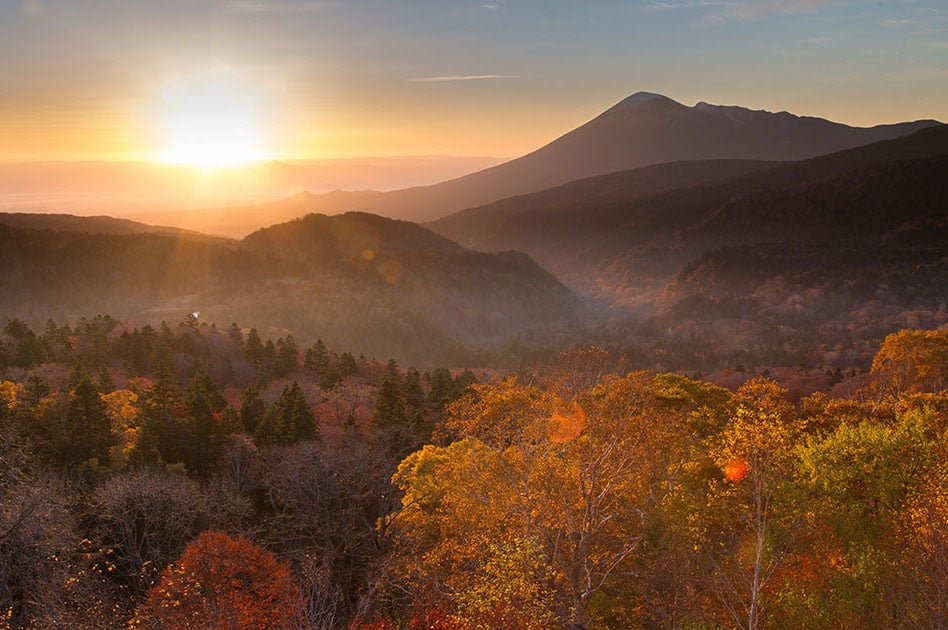
Hachimantai Jyukai Line one of countless examples of the area's pristine natural landscapes
It's the impressive Mt. Hachimantai that gives its name to the barely-known city of Hachimantai.
The city of Hachimantai was only established in 2005. Up until that point, this was simply a small group of quiet, rural communities. The towns of Ashiro and Nishine were merged with Matsuo village (all part of the ancient Mutsu Province) to create the new Hachimantai city.
The label 'city' though is a misleading one. There are only around 25,000 residents, and the local economy is based on agriculture, forestry and seasonal tourism.
Location Map: Hachimantai
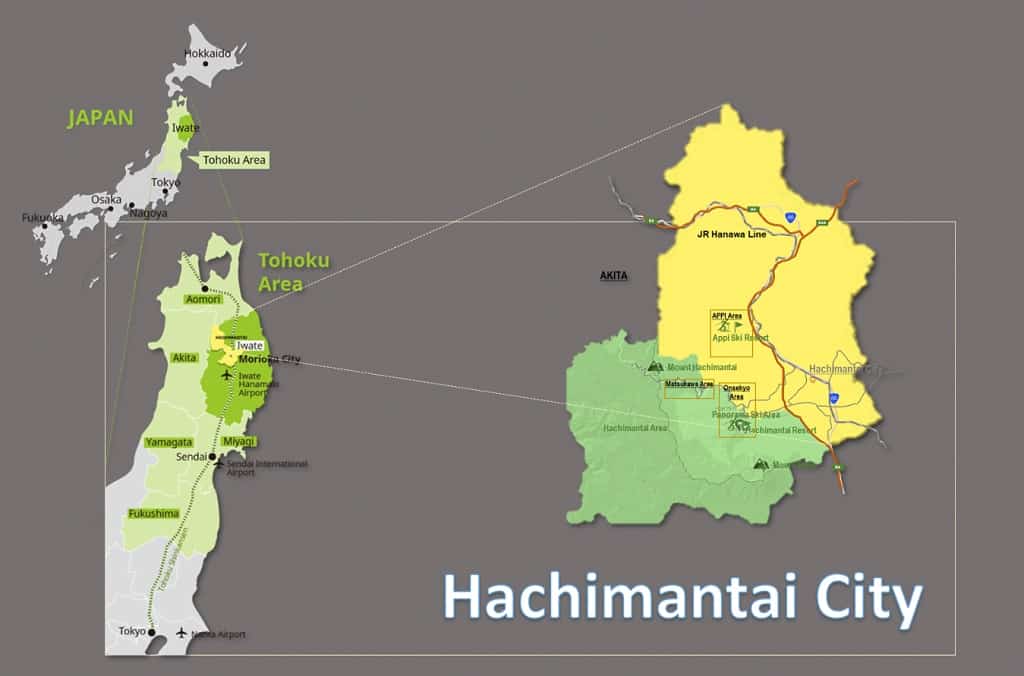
Lovers of the outdoors are in their element in this region, with the pristine and stunning scenery that remains widely untouched by the massive development projects that plague other regions.
So abandon any ideas you have of Tokyo, Osaka or their kind, with their showy, multicoloured neon-lit, tourist-packed and noisy streets. Hachimantai is a retreat abundant with nature where cultural exchange, tradition, and adventure all coexist in harmony. A hideaway to come to precisely get away from the trappings of modern city life.
VIDEO: The Natural Beauty of Iwate
To the ends of the Earth
I was first introduced to the remarkable Northern Tohoku region of Japan many years ago when reading my first copy of the Rough Guide to Japan. In the book it said the urban Japanese consider this northern tip of Honshu to be a backwater.
Even Japan's most celebrated haiku poet Matsuo Basho had his reservations, saying of his journey into the country's deep north: "I might as well be going to the ends of the earth".
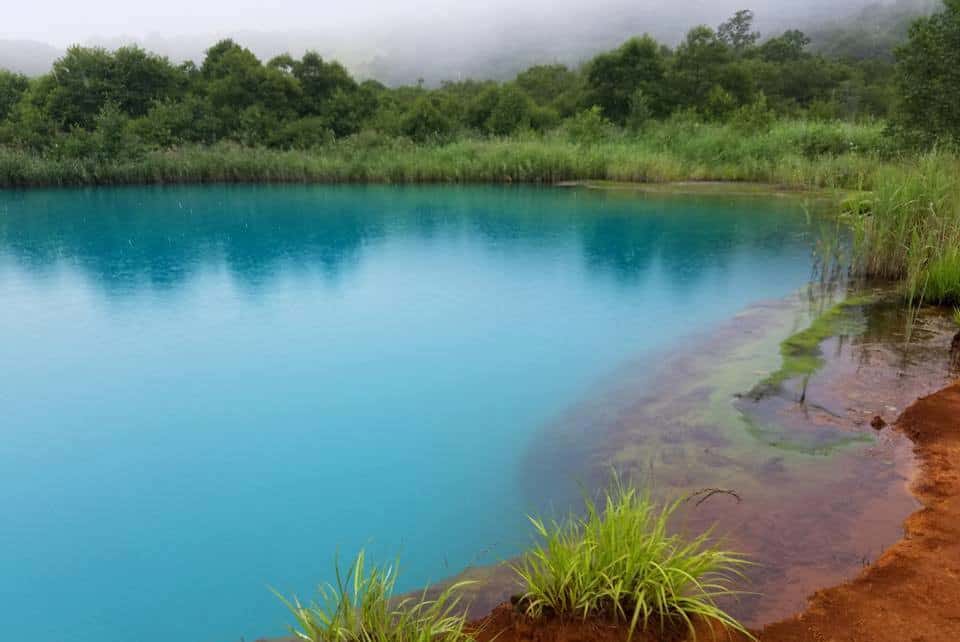
Gozaisho-numa (pond) in Japan's deep northern interior - an area that still feels wild and unexplored
As soon as I read that I knew this was just the sort of place I'd appreciate and set about exploring the region.
With its dramatic and picturesque Pacific Ocean and Sea of Japan coastlines, wholesome foods, and welcoming people, not to mention its unique blend of Japanese history and traditional culture, this place still feels like an untouched piece of Earth.
Of course, Northern Tohoku isn't completely unknown. This part of Honshu has attracted ski tourists from around the globe for some years.
A sub-group of skiers dedicated to powder snow (known as powderhounds) have travelled from far and wide, with many seasoned and well-travelled experts declaring the powder snow found in Northern Tohoku to be the finest on the planet.
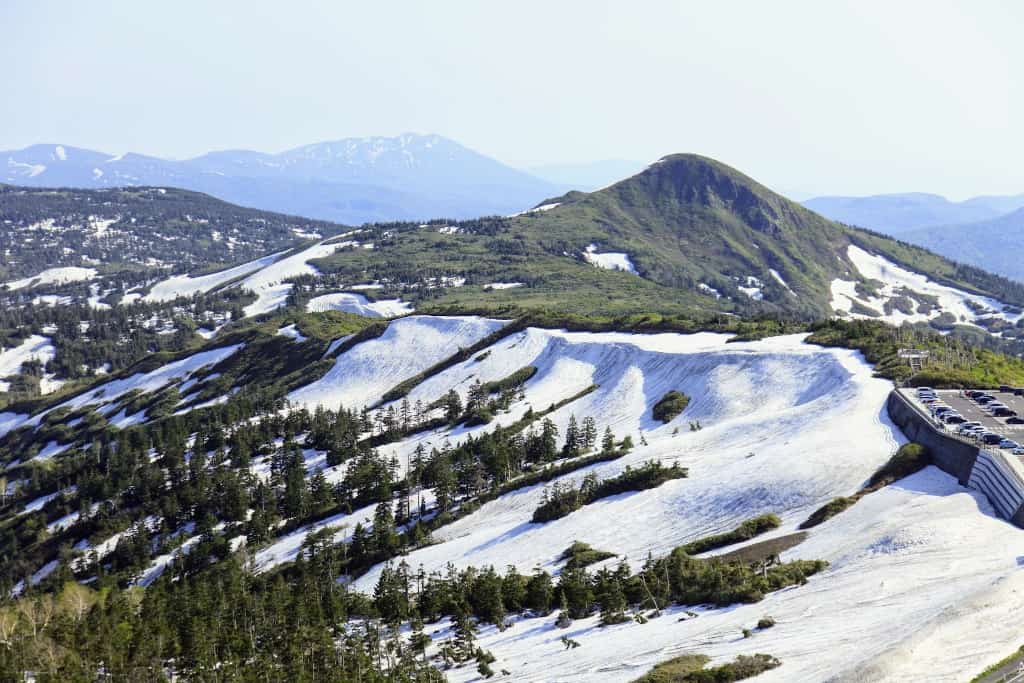
This remote part of Japan is blessed with magnificant views and yet isn't difficult to get to | Photo: © JNTO
Hachimantai is in the far northwest of Iwate Prefecture. The source of the Yoneshiro River is in Hachimantai, and parts of both Mount Hachimantai and Mount Iwate are included within its borders.
Iwate is Japan's second largest prefecture, but has the lowest population density of any prefecture aside from Hokkaido. Running into too many other travellers (or locals for that matter) will not be a problem here!
Follow the trails…
One of the best ways to take in the wealth of nature Hachimantai offers is by following its many trails.
What I like most about following predetermined routes is that someone who has way more knowledge than I do about the area has already done all the hard work for me.
They've selected the best route, taking in the most wonderful views, seasonal variations in the landscape, the sounds and smells the environment has to offer. All I have to do is look through the different predetermined trails to see which offer what I most want out of a hike that day and then choose my favourite.
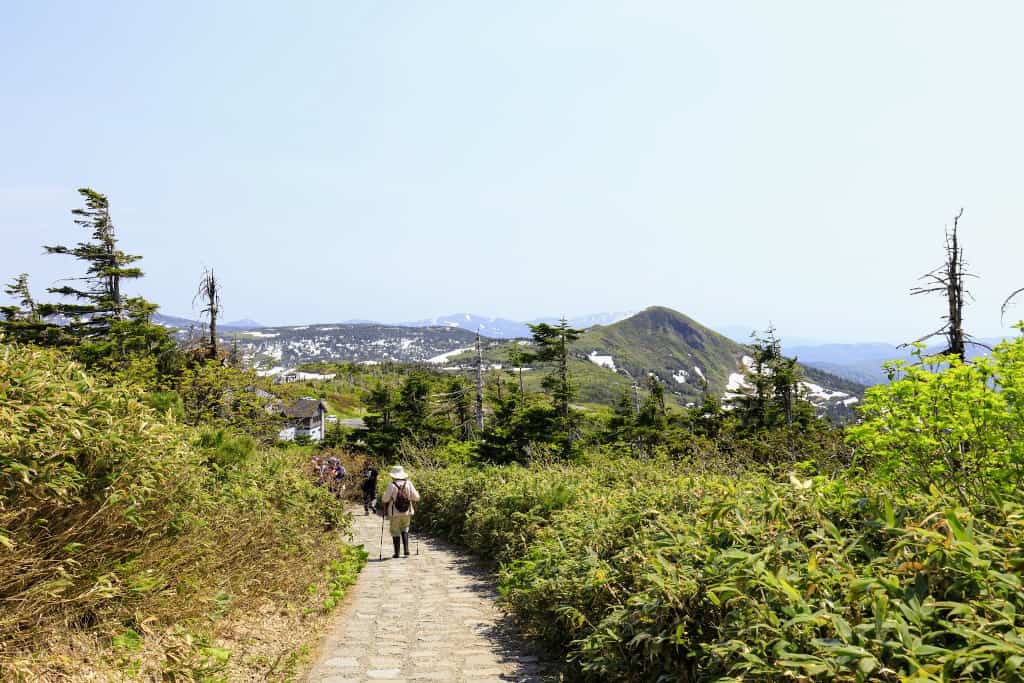
All season hiking is a major activity in the region with preset trails for all levels of fitness | Photo: © JNTO
One of the preset trails I’ve not yet done but would like to try covers a group of crater lakes and ponds. This includes the spectacular kagami-numa pond - the Dragon Eye. If you're looking for something a little more challenging, then the 50km mountain trail, taking in Mt. Iwate (2,038m), Mt. Hachimantai (1,613m), and the Appi Kogen ski resort, is worth a look.
The Hikes in Japan website has some excellent guides to trails in the Tohoku region.
Seasons in Hachimantai: sakura, koyo and more
Although the Northern Tohoku region is well-known within skiing circles for being a go-to destination in wintertime, the area in general, and Hachimantai specifically, has something to offer throughout the year.
The unspoilt, wild landscape naturally lends itself to cherry blossom viewing in the sakura season in spring. Here the spectacular blooms reach their peak around the middle to late April.
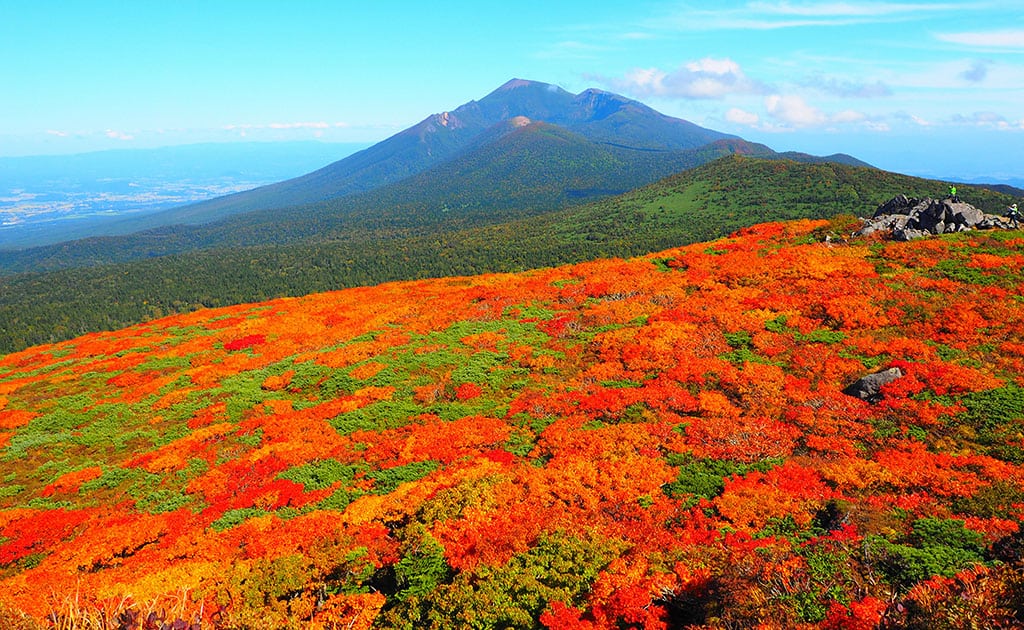
Mitsushi Mountain - part of a 50km hiking trail that also takes in Mt. Iwate, Mt. Hachimantai and the Appi Highlands
Summer in the region is warm, but the higher elevation mountain ranges and sheltered valleys are protected from the worst of the summer heat. Due to Northern Tohoku’s position at the northern tip of Honshu the climate is naturally cooler than prefectures just to the south and towards Tokyo.
In autumn, the mountain sides become a beautiful natural patchwork of burnished leaves during Japan's dramatic “koyo” season. Although not as well-known outside of Japan as spring’s cherry blossom, many consider this season’s display more breathtaking. It’s longer too, meaning you have more chances to take in this amazing natural event. The season reaches its peak in Hachimantai between early and late October.
VIDEO: Hachimantai For All Seasons
Of course, in winter the area is all about the snow. The ski season draws crowds and keen powderhounds for a reason: the snow is sublime. But if winter sports aren’t your thing, there’s plenty of hot onsen waters to soak in, nature trails to traverse, and warm inviting restaurants where you can sample local seasonal dishes.
Top experiences and attractions in Hachimantai
Whatever season you choose to visit in, here's a few Hachimantai highlights that are worth seeking out if you're tempted to explore this part of Northern Tohoku...
The highest stratovolcano in the area
Northern Tohoku's other claim to fame is Mt. Hachimantai. With an altitude of 1,613 metres above sea level, and an active volcano that last erupted 300 years ago, Mt. Hachimantai stands roughly halfway between the city of Aomori and the city of Hachimantai, from which the city name was derived.
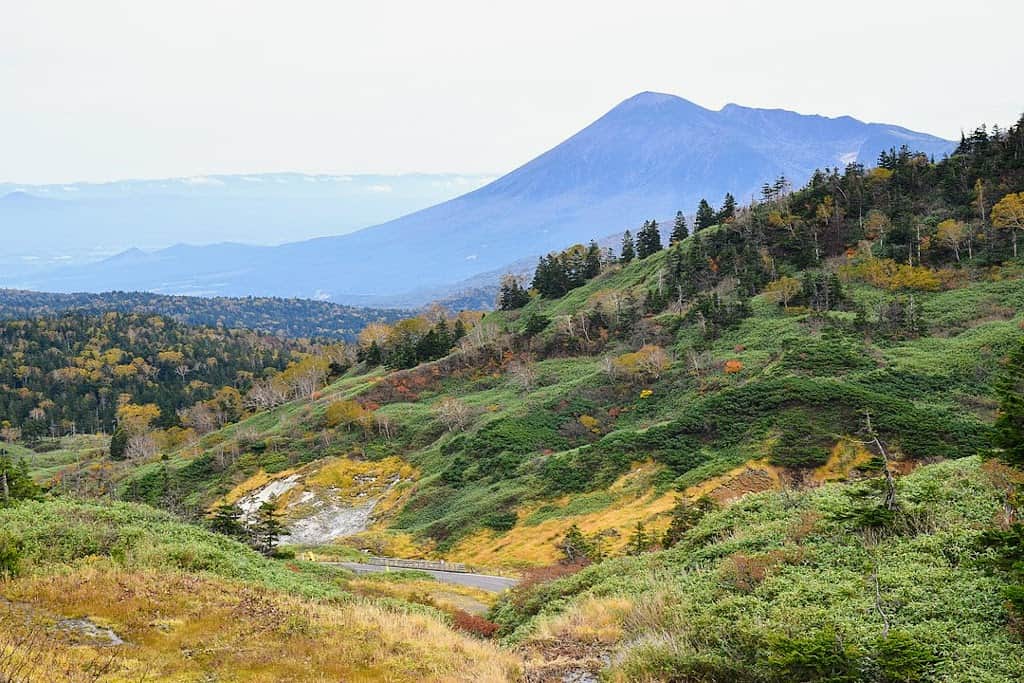
Mount Hachimantai and its surroundings | Photo: CC BY 2.0 雷太
A collection of natural hot spring villages
Onsenkyo is a Japanese term referring to a collection of onsen grouped in one community, forming a hot spring resort, and can be found throughout the northern Tohoku.
Hachimantai Onsenkyo is a hot spring resort located in the Hachimantai area of Towada-Hachimantai National Park. Here you'll find a good selection of hotels, pensions, and other lodging accommodation where you can soak in the naturally-heated waters while admiring the seasonal scenery.
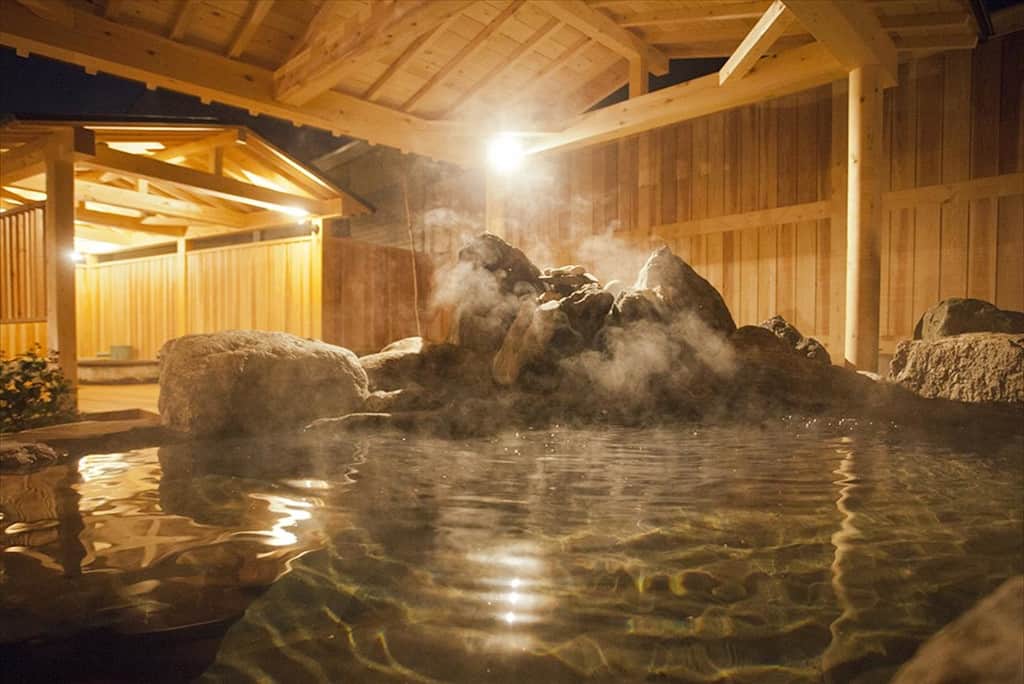
The Hachimantai area of Northern Tohoku is blessed with many natural hot spring onsen
It's also a convenient base for trekking, cycling, and outdoor activities in general. The autumn foliage is particularly spectacular in this area, creating a fantastic sight in autumn.
Nearby is the Hachimantai Resort attracting many skiers in winter.
8 metre high corridors of snow
The Hachimantai Aspite Line, which runs to the top of the mountain, is a popular 27 km driving course where the scenery changes with each elevation. The road is closed in winter and reopens in late April, with an overwhelming "snow corridor" several meters high.
Due to the heavy annual snowfall, that forces the road to close between early-November to mid-April each year, the road is flanked by sheer walls of snow that measure up to 7-8 meters! This 'snow corridor' is the longest of its kind in Japan and attracts visitors each year just to see this impressive sight.
The miraculous Dragon Eye pond
The Dragon Eye pond found near the summit of Mt. Hachimantai is one of the region’s most popular spots, and with good reason. Also known as kagami-numa (or mirror pond), a dazzling feat of nature can be witnessed here in early June, at least for those lucky enough to catch this rare and fleeting natural phenomenon.
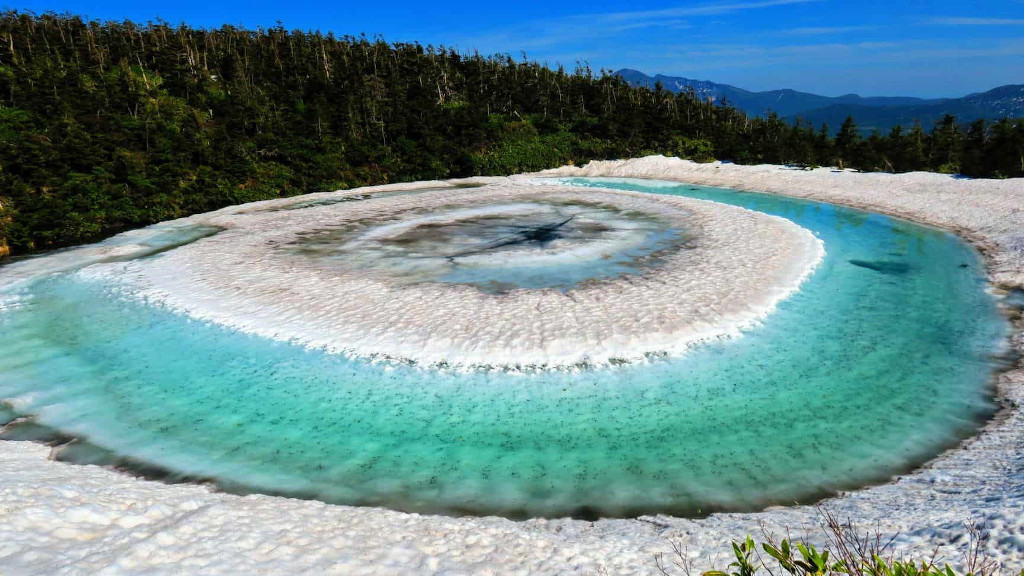
The spectacular natural phenomenon of Kagami-numa - 'Dragon Eye' pond on Mt. Hachimantai
During the winter, snow falls, gradually building up on the frozen lake. Then, come springtime, the snow slowly begins to thaw. The melting snow causes water displacement in the pond, leaving rings of white snow, contrasting dramatically with the rings of the aquamarine water. The result is what looks like a giant eye.
The pond was christened as the Dragon Eye in 2016 when a Taiwanese tourist saw the phenomenon and shared a photo of it on social media. But unknown to them, this interpretation curiously ties in with the local legend of Hachiro-taro, a young man who after drinking water from one of the mountain’s mystical ponds, transformed into a dragon.
Thereafter, the city of Hachimantai officially adopted the name Dragon Eye.
SEE ALSO: Towada-Hachimantai National Park
Download a PDF of this Guide:
VIDEO: Dragons and Bears | Visiting the Hachimantai Dragon Eye
Traditional Washinoo sake since 1829
Anyone with even a passing interest in Japanese sake should visit Washinoo Brewery in downtown Hachimantai. The name Washinoo translates as the 'Eagle's tail' and is only available locally, making sampling it a unique opportunity.
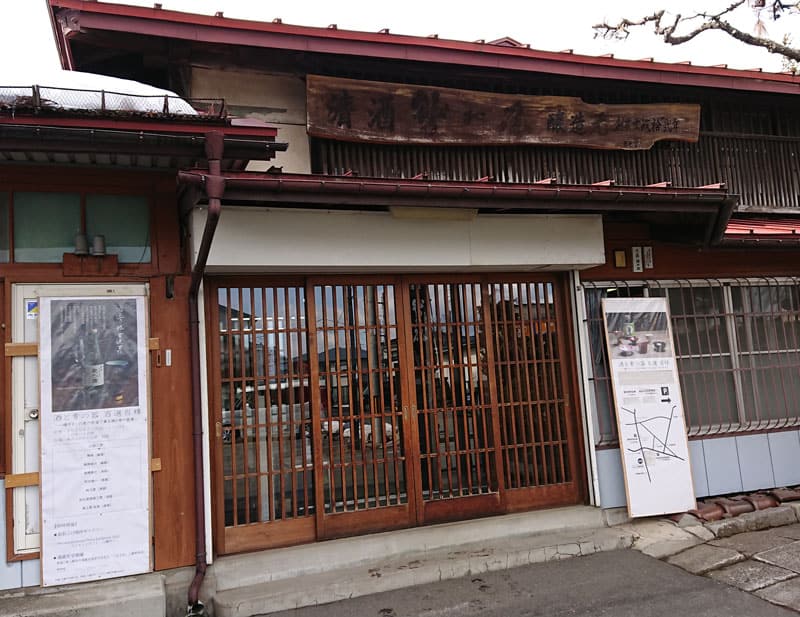
Hachimantai's local Washinoo sake brewery has been producing unique spirits here since 1829
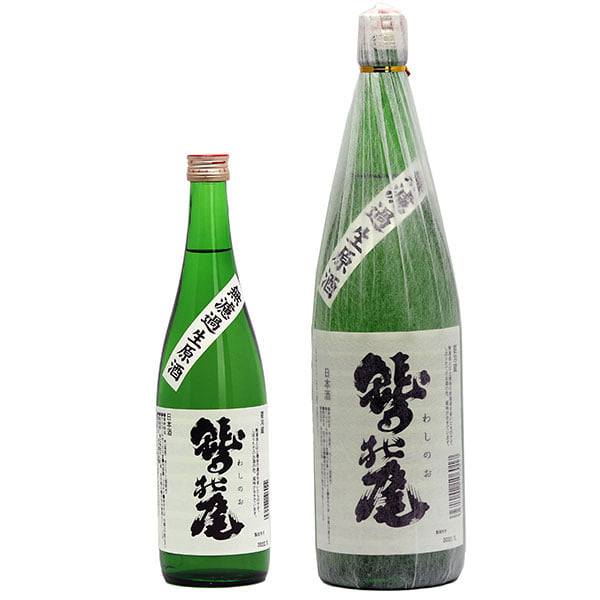
Limited Edition sake by Washinoo Brewery
Washinoo (pronounced washi-no-oh) has been making this sake here since 1829. Its location is at the foot of Mt. Iwate, which locally it is also nicknamed 'Mt. Ganju', meaning 'Big Eagle'. It is believed that large eagles used to populate Mt. Iwate.
The Washinoo brand, produced in limited quantities, is made with pristine underground water from Mt. Iwate and is intended to be enjoyed with the local food.
Sessions to experience the making and tasting of Washinoo sake can be arranged on demand, during which you will have the opportunity to sample and compare several varieties of the sake, each of which has a different flavor.
You can also see the warimizu, the process of adding water to genshu, or undiluted sake, a critical step that determines the final taste of the spirit, as well as the tamawari demonstration, the final stage of sake production.
Healing milkly white waters
Within the Towada-Hachimantai National Park, you’ll find Matsukawa Onsen. Drawing their healing waters from the cloudy sulphurous local source spring, these quiet, havens of relaxation are scattered along the Matsukawa River.
One of these, Matsukawa Fuso, Shofuso onsen, opened in 1743 and is thought to be the oldest in the area. The clouded white hot spring water from the source is rich in sulphur and is loved by fans of hidden hot springs all over Japan.
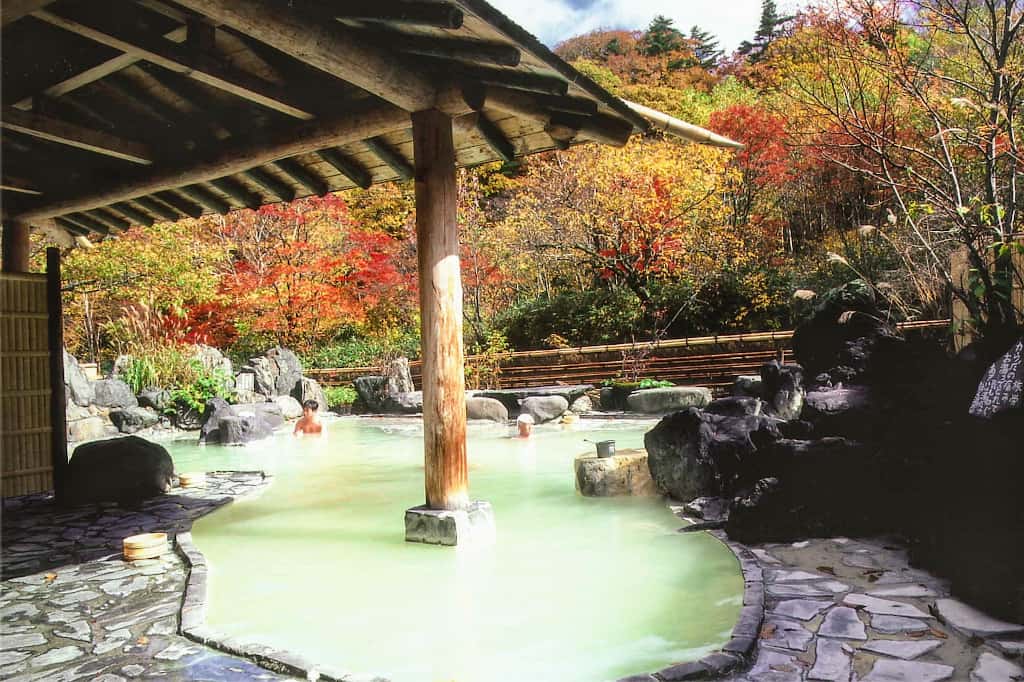
Dotted along the Matsukawa River are a handful of natural sulpher hot springs called Matsukawa Onsen
It has 13 Japanese-style guest rooms, and meals served consist of courses of dishes made from local ingredients, such as Iwate Maesawa beef, tempura with seasonal wild vegetables, rainbow trout sashimi, and sashimi of char raised in pristine local streams.
During the 1950’s/60’s a copper mine in the Matsuo area flourished, at one point the population reached 15,000. But the copper resources ran out and local officials had to find another source of income for the region and thought of developing onsens for tourism.
VIDEO: Getting Lost in Backcountry Hachimantai Iwate
Using the drilling equipment left behind from the copper mine, they spent seven years drilling for the natural hot spring waters they knew were running beneath the mountain valley. When they finally tapped into the geothermal waters, the Matsukawa Onsen resort area was created.
The rich geothermal activity here also gave birth to Japan's first geothermal power plant in the 1960’s. It’s something the locals are proud of, and a museum including the first turbine that was used to generate power celebrates this.
Cycling and mountain biking experiences in Hachimantai
The local Clubman Lodge is the place for enthusiasts to stay and get kitted out with all the best equipment and gear for cycling and mountain biking in Hachimantai.
This year-round activity is one of the most enjoyable ways to explore the region and its surroundings, an opportunity to feel the natural beauty of each of each four seasons.
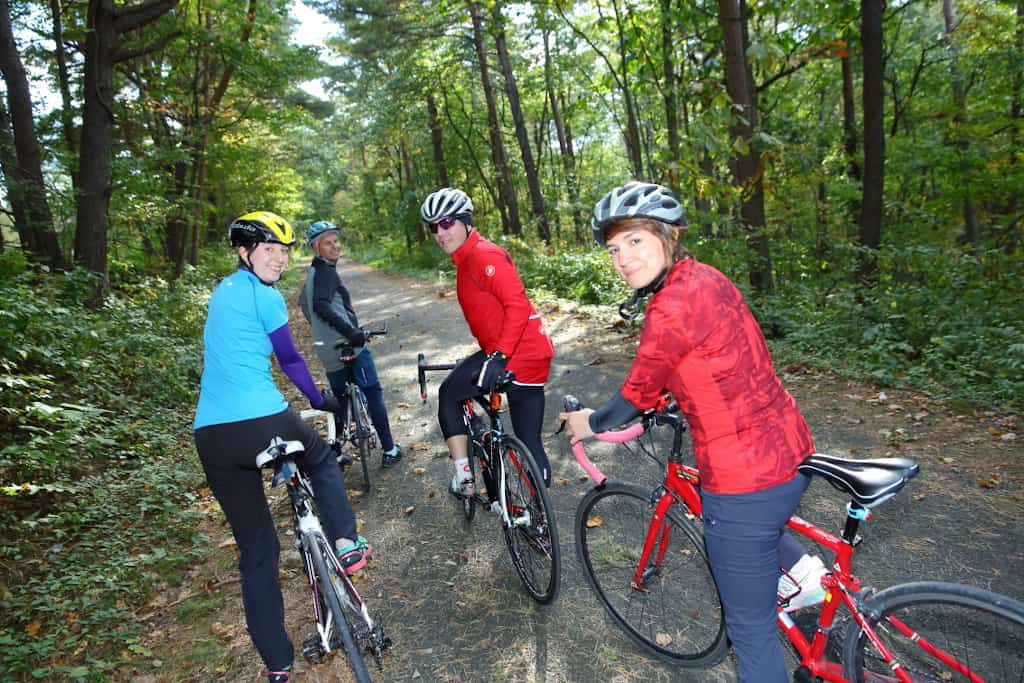
There are multiple cycling and mountain biking trails in and around Hachimantai, catering for all abilities and ages
Whether the scenic views of Mt. Hachimantai, the breathtaking scenery of Nanashigure, or the Appi area, typical of the Northern Tohoku, has broad-leaved trees such as beech, birch, and oak, along its gentle hills that spread from the foot of its numerous mountains.
New fresh green growth and a cool breeze are typical of springs. Summers, on the other hand bring in the blue skies, and sunlight softly beaming through the trees is a real treat, as the climate is moderate and dry, perfect for cycling. Autumns in Hachimantai are magical and one the best times to cycle leisurely, through the beauty of its autumn leaves.
VIDEO: Breathtaking mountain rides in Hachimantai
Even in the snow, the bikes keep rolling. Guided cycling tours in the winter months take you off the beaten path with full-on backcountry tours taking in the area's dramatic forests.
Whatever season you choose, local guides and experts provide full training on bike and speed control, and other techniques to fully enjoy mountain biking. All carefully explained and rehearsed, prior to each cycling experience, so you can explore with confidence and focus on taking in the stunning natural landscape along the way.
Advanced riders have the opportunity to enjoy the thrill of full-scale downhills during the off-season ski resorts.
3 Tohoku mountain frontier ski resorts
Preservation of its rich heritage, contrasting with embracing modern sports such as snowboarding, is what helps set Japan's Northern Tohoku area apart from the rest of the country.
The world-famous APPI Kogen ski resort offers the finest powder snow and is nestled in the mountains of northern Iwate prefecture, a short drive from Hachimantai. Surrounded by a beautiful natural setting with plenty of stunning hiking trails to keep you occupied in-between runs.
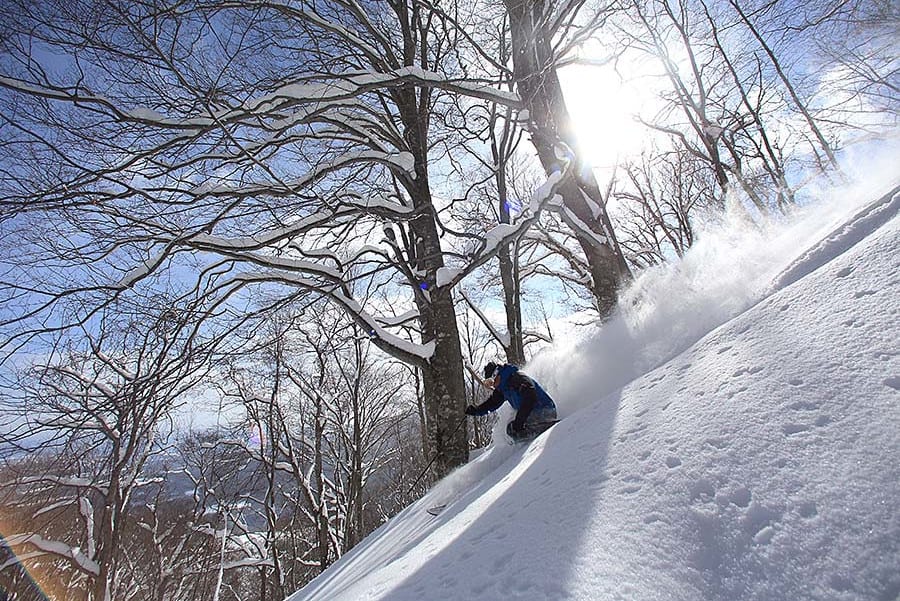
The Shimokura ski area offers three powdery forest courses as part of its six runs
Hachimantai boasts three ski resort areas:
APPI Kogen
The Appi area is not only the host of Northern Tohoku largest ski resort, but also has over 20 lodges combined into what’s known as the “Appi Pension Village”.
With 21 different runs, APPI Kogen is Japan's all-season ski resort. The terrain is suitable for all skill levels with 30% categorised as Beginner, 40% Intermediate and 30% Advanced. The longest run is 5,500m, and the resort has 1 Gondola, 3 Quad Lifts and 6 Double Chair Lifts to get you to the top of the runs.
VIDEO: APPI Ski Resort
Panorama Ski Area
The gentle slopes of the feature top-quality powder snow groomed to perfection, making them great for small children and families as well as older members thanks to the less onerous nature of the courses. The Guinness World Record for ski parades, whereas many skiers as possible ski down a hill in a line, was established here on the unique, long gentle slope.
A feature of the Panorama Ski Area is Hachimantai Winterland and the Beginner’s Park.
Hachimantai Winterland is a safe and secure spot for small children to have fun away from the slopes. The area is exclusively for playing in the snow and includes a large array of equipment and can be enjoyed by all ages, from children to adults.
The Beginner’s Park is for first-time skiers and snowboarders to enable them to ride on the snow escalator and have relaxing fun.
Shimokura Ski Area
While the wide variety of slopes can be enjoyed by everyone, from novice to expert skiers, the ultralight powder snow makes skiing easier even for beginners with just a little bit of new snow, making the resort very popular. Steep slopes with deep powder and a tree run are recommended for advanced skiers.
A free shuttle bus services runs between the Panorma and Shimokura areas, taking around 10 minutes.
Japan's leading all-season ski resort
APPI Ski Resort’s winter activities understandably focus on its famous snow, from the usual skiing and snowboarding either on piste or on backcountry, to snowshoeing, hiking, and even snow e-mountain biking.
Outside the winter season, the lifts are used to access some downhill mountain biking trails and, of course, there’s a wide variety of hiking courses, nature oriented sightseeing, that’s synonymous with the region. There's also a golf course.
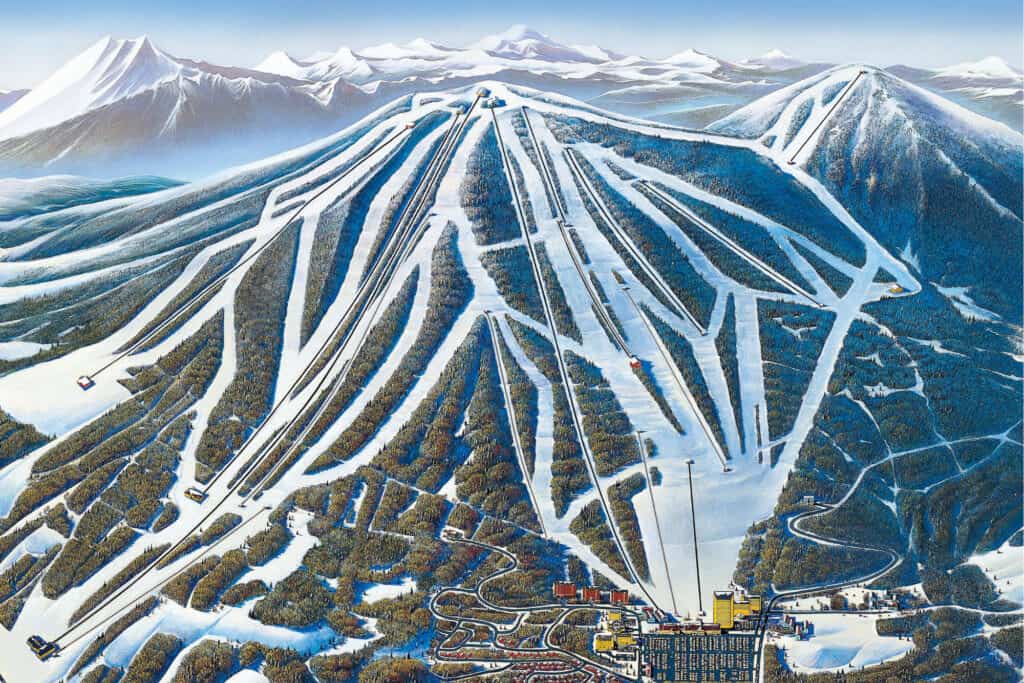
The APPI Kogen Ski Resort has 21 ski runs spanning all skill levels
A newly devised vision, the Appi Valley concept, which aims to become a centre attraction for inbound tourism, has seen major international hotel brands including Intercontinental Appi Kogen Resort (IHG), ANA Crowne Plaza Resort Appi Kogen and ANA Holiday Inn Resort Appi Kogen open signature accommodation in the area.
As further evidence of the recognition of the attractiveness of this area, the British Harrow International School will also soon open its first school in Japan, in the Appi area.
A National Park spanning 3 prefectures
The Towada-Hachimantai National Park is an 854 square kilometre area spanning Aomori, Akita and Iwate Prefectures.
The park is made up of two areas. The first, to the north, consists of the Towada-Hakkoda region including Hakkoda Mountain, Lake Towada and Oirase Stream. The second, to the south, is the Hachimantai Plateau which includes Mt. Hachimantai, Mt.Akita-Komagatake and Mt. Iwate.
The Towada-Hakkoda region is the serene side of the park, where visitors go to relax, walk and take in the lakes and forests, while the Hachimantai side is known as the dynamic face of the park, where more active and adventurous pursuits are increasingly popular.
The park is dotted with hot springs of abundant water quantity and variety, such as Fukenoyu, Sukayu, Tamagawa, and the famous and historic Nyuto onsen.
READ: Towada-Hachimantai National Park: Gateway To Adventure In Northern Tohoku
Going off-road in the great outdoors
Amongst the wealth of year-round outside activities in the region, adrenalin junkies should head straight for the Kuruma Asobi Concept Park.
Close to Appikogen JR Station and next to the APPI Ski Resort, this off-road park area is perfect for anyone looking to get their blood pumping and heart racing, or to camp in the great outdoors.
Surrounded by mountainous forests, this cleverly crafted activity park offers visitors the chance to try out off-roading in a variety of action vehicles, including: Suzuki Jimnis, Polaris 4x4s and, in winter, snowmobiles.
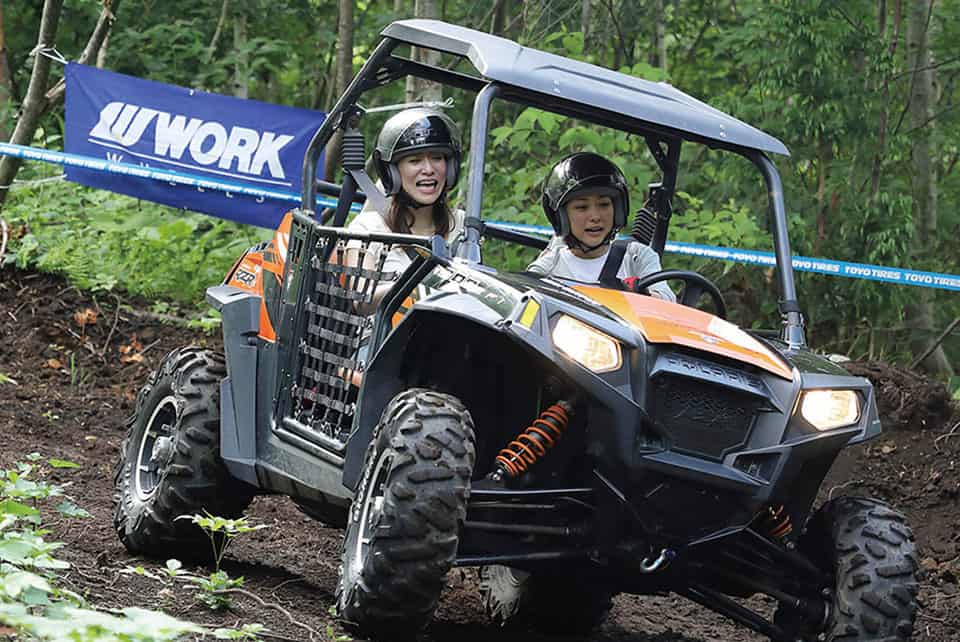
Get off-road at the mountainous Kuruma Asobi Concept Area park in Hachimantai
THE MOTEL has domes providing warm overnight accommodation even in winter. There are free areas for camping, as well as trailer park grounds with cottages and trailer saunas creating a fun, communal atmosphere.
Fishing, mountain biking and off road tours are are also held here depending on the season.
LEARN MORE: Kuruma Asobi Concept Area
Organic food grown with natural geothermal energy
Culinary wise, Hachimantai is very rich both in terms of the variety of food as well as in the ingredients. Most hotels, pensions, and restaurants all use locally produced ingredients, some vegetables, like basil and sushrooms are grown organically using the abundant natural geothermal energy.
Throughout Hachimantai Japanese cuisine is served in most hotels and restaurants and what sets them apart from one other is that each use their own creativity and style.
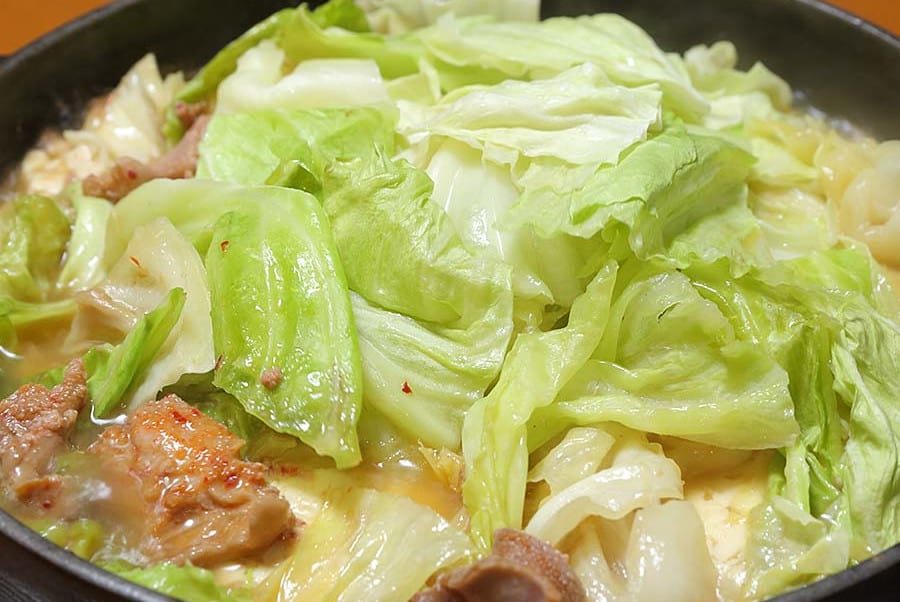
The cuisine served in hotels and restaurants in Hachimantai makes great use of locally grown organic ingredients
The preparation of traditional homemade local foods can be seen and the dishes sampled through an organized tour. These local cuisine experiences take you back to an older Japan and take place in an historic home in Hachimantai city. The chance to try traditional foods and meet the local mums is a real treat that will undoubtedly enrich your visit.
Signature Northern Tohoku regional foods
Cuisine in Northern Tohoku draws on the region’s traditional pastoral roots, delivering exquisite examples of simple, healthy and organic foods and dishes.
Aomori apples - Hirosaki is Japan's biggest apple producer and the city is synonymous with the delicious iconic red fruit.
Kiritanpo nabe - a chicken hot pot using pounded rice, particular to Akita Prefecture.
Morioka Sandaimen (three 'great noodles' of Morioka) - describes the noodle dishes morioka reimen, morioka Jajamen, and wanko soba of the city of Morioka.
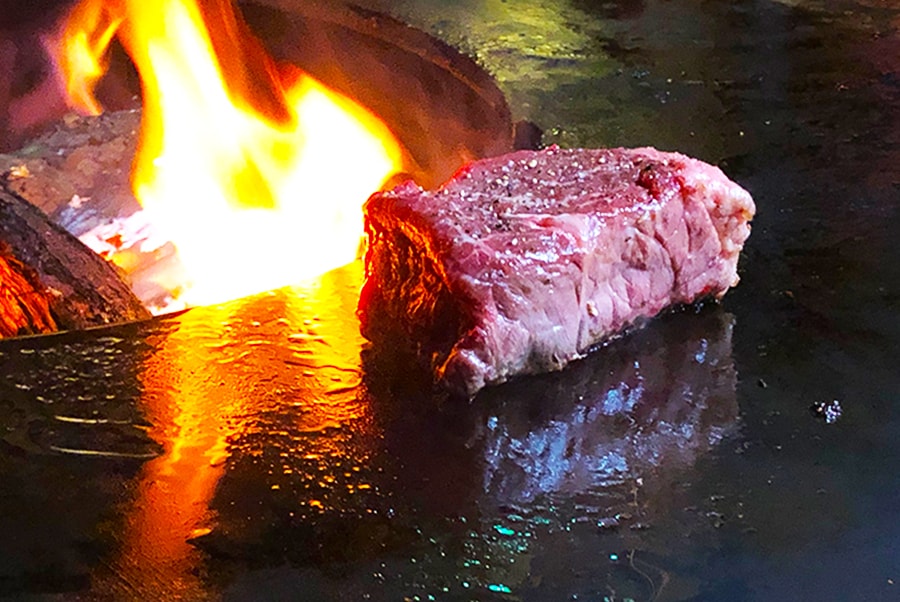
Hachimantai Maesawa beef
Kandara-jiru (winter cod soup) - considered a signature winter dish by the Japanese.
Kaiki-menchi (deep fried oysters) - if you're not usually an oyster fan, trust me, these will convert you.
Hachimantai Maesawa beef - the local fat marbled wagyu beef is served in restaurants.
In autumn, an array of fruits such as persimmons, pears, and apples are harvested. Locals offer excellent fare using these fruits. The food from this region is considered special and is justifiably renowned for its high quality.
Getting to Northern Tohoku
There are plenty of convenient transporation options into Aomori in the north of the region. Shinkansen bullet trains from Tokyo to Aomori cover the 673km (418mi) distance in 3hrs 20mins. Services run hourly and are covered by the Japan Rail Pass.
An overnight bus for the same trip will be the cheapest option, but takes around 12.5 hours. Direct daily flights from Tokyo to Aomori take 1hr 15mins. To drive from Tokyo to Aomori will take around 8.5 hours.
If you're contemplating driving in Japan I suggest reading my guide: Driving In Japan Made Easy - A Beginner's Guide.
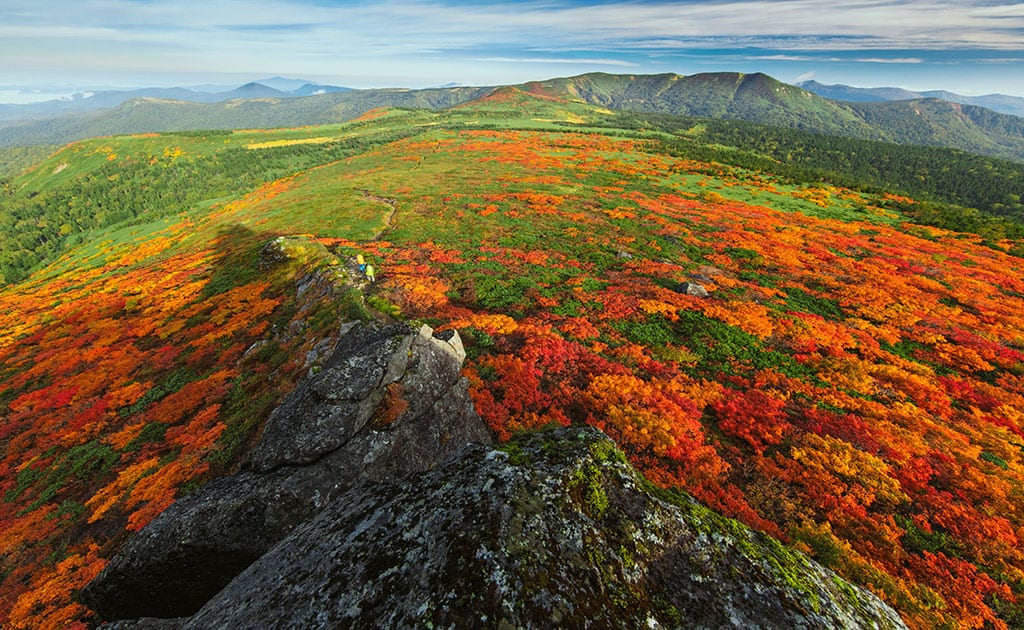
Nature lovers can immerse themselves in nature in Northern Tohoku, like here at Mt. Mitsuishi
If your destination is Hachimantai, then you should head for Iwate Prefecture. It can be reached from Tokyo in a little over 2 hours by the Tohoku shinkansen via the Komachi and Hayabusa lines. The Shinkansen stops at Morioka, Iwate’s largest city. The JR Hanawa Line in the north provides a direct entry point into the Hachimantai area.
Getting to Hachimantai
By Air
If you are flying, there are two airports that you can fly into - Iwate Hanamaki Airport (closest to Hachimantai) or Sendai International Airport.
Hanamaki Airport (HNA), is a small reginal airport with domestic flights only.
At present, there are 5 domestic flights from Hanamaki serving mainly, Fukuoka, Osaka, Nagoya and Sapporo. The longest flight from HNA is a 1,154 km (717 mile ) non-stop route to Fukuoka (FUK). This direct flight takes around 2 hours and 5 minutes and is operated by Japan Airlines.
Japan Airlines (JL) & Fuji Dream Airlines (JH) are the two airlines that operates from/to Hanamaki. Express buses connect the airport to the Morioka Station (about 45 minutes).
By Train
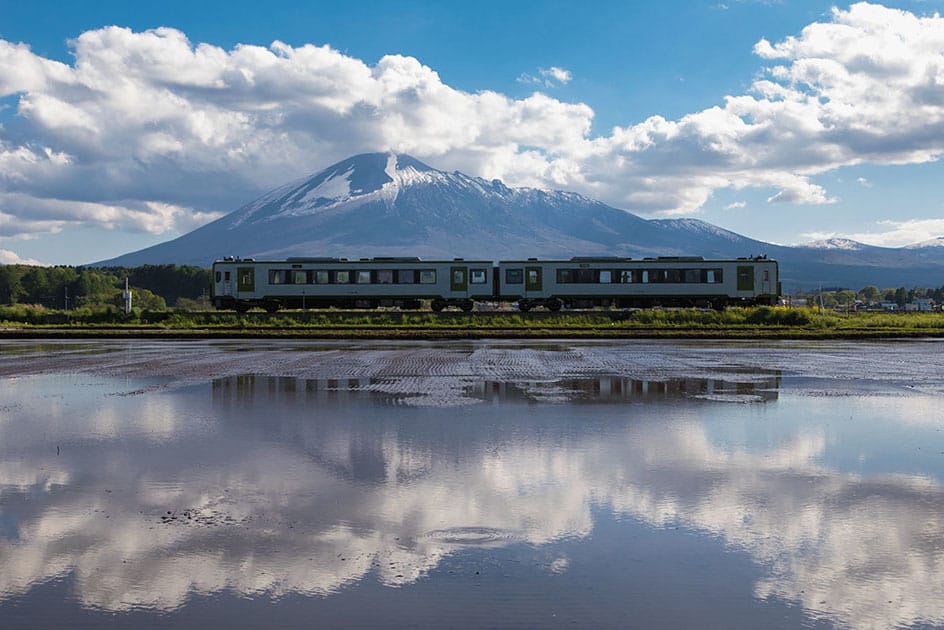
If coming by train, take the JR Hanawa Line from Morioka to Hachimantai for spectacular views like this
Tokyo and Morioka Station, the capital of Iwate Prefecture, are connected by bullet trains along the JR Tohoku Shinkansen. The one way trip takes just under 2 hours, cost is fully covered by the Japan Rail Pass, JR East Tohoku Area Pass and JR East South Hokkaido Pass.
The JR Hanawa Line in the north provides a direct entry point into the Hachimantai area.
By Bus / Rental Car / Taxi
A bus network, operated by Iwate Kenpoku, connects to various sights and major hotels in the area. However, the bus service is infrequent on some of the routes, so a rental car (or taxi) is the most convenient way to travel around Hachimantai. Rental car outlets can be found at Morioka Station and many other major railway stations, cities and airports in the northern Tohoku Region.
Note that traveling in the area during winter differs greatly from travelling during the rest of the year. From late November to mid-April some of the roads in the mountainous interior are closed to traffic due to the heavy snow falls. You might also find my post Driving In Japan Made Easy - A Beginner's Guide helpful for your pre-trip planning.
Where to Stay in Hachimantai
There are several great places to stay in Hachimantai, including ryokan and modern hotels that offer excellent views over the surrounding mountains, with options spanning a range of budgets.
Support The Real Japan. Book With Booking.com
Conclusion
If you love nature, then Northern Tohoku’s Hachimantai should absolutely be on your shortlist. It’s one of those places that’s so rare to find these days. The landscape is unspoilt, has a wealth of natural hot springs and yet it offers the comforts of modern life.
It may be little-known for now, but with some of Japan’s finest outdoor activities available all year round, Hachimantai could well be Japan’s next hot spot.
Google Location Map

About the Author
A writer and publisher from England, Rob has been exploring Japan’s 6,800 islands since 2000. He specialises in travelling off the beaten track, whether on remote atolls or in the hidden streets of major cities. He’s the founder of TheRealJapan.com.
Resources
Download a PDF of this Guide:
Useful Websites
Travel To Tohoku
https://www.tohokukanko.jp/en/index.html
Official Hachimantai Tourism
https://trip8.jp/wonder-off-the-beaten-path/
Appi Ski Resort
Hachimantai Onsenkyo
https://www.tohokukanko.jp/en/attractions/detail_1768.html
GoNorth Japan YouTube Channel
https://www.youtube.com/channel/UCk6dFlJNNJMljNg2-56piUw
Clubman Cycling tour & Event organizer
http://www.clubman.co.jp/access.html
Hachimantai Hotel & Resort
https://www.hachimantai.co.jp/en/summer_activities/
Mt. Iwate, Hachimantai, Appi Kogen 50 km Trail
https://www.env.go.jp/park/towada/hachimantai/en/course/course_008/index.html
Matsuo-Hachimantai Visitor Center
Open | 9:00 a.m. - 5:00 p.m, 7 days per week. |
|---|---|
Closed | Closed every Tuesday from January to March. Closed from December 29th to January 3rd. |
Languages | Japanese |
Address | 1 Chome Kashiwadai, Hachimantai, Iwate Prefecture 028-7303, Japan (Google Map) |
Phone |
+81(0)195 78 3500 |
Website |
Northern Tohoku Travel Planning Services
Have some questions about exploring Northern Tohoku and Hachimantai? Want help planning an itinerary? The Real Japan offers some services that you might like to take a look at.
My Travel Planning Calls are ideal if you have a few unanswered questions about a trip you are planning, or would like feedback and suggestions on an itinerary you are building. Learn More HERE.
If you'd rather hand over all the hard work for planning an entire trip then my Travel Planning Service is tailor-made for you. Learn More HERE.
Further Japan travel guides, books and checklists are available in The Real Japan Travel Store.
Travel experiences in Northern Tohoku (Rakuten Travel Experiences)
EXPERIENCE: Dye Your Own Scarf With Geothermal Steam in Matsukawa Onsen
EXPERIENCE: Try Kyudo Archery at a Temple in Noshiro, Akita
EXPERIENCE: Glamping and BBQ at the Tanesashi Natural Lawn in Aomori
EXPERIENCE: Michinoku Coastal Trail Hike With a Fisherman's Hotpot Lunch
EXPERIENCE: Experience Canoeing With Original Handcrafted Canoe in Akita
More Destination Resources
My List of Recommended Japan Travel Resources
The Real Japan Travel Store
If you enjoyed this article please share this image online:

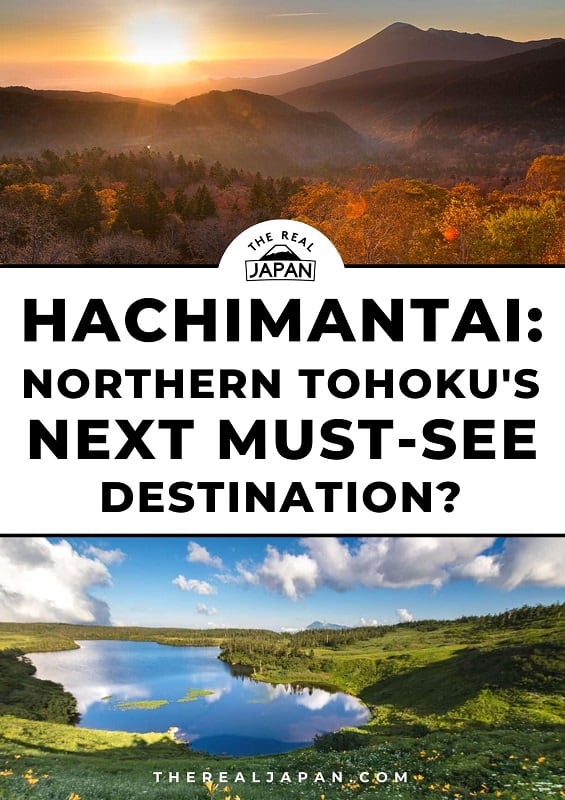

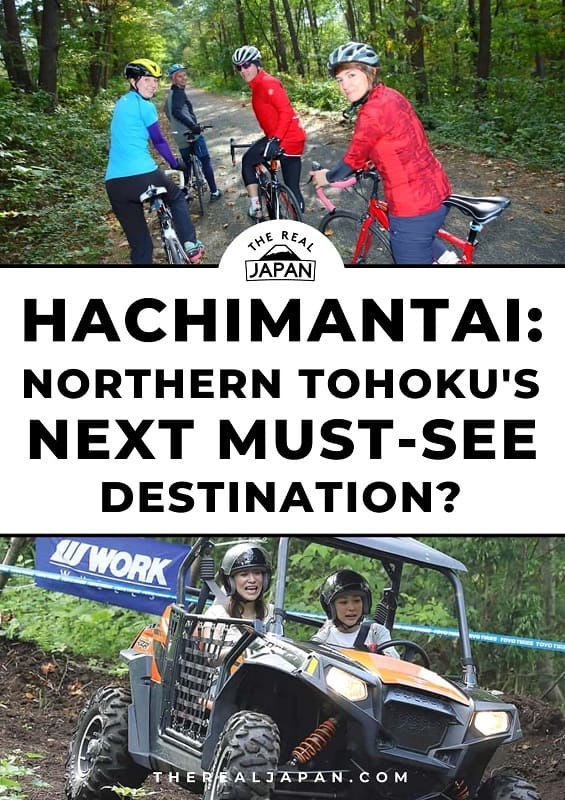
Wow, thanks for the article. I didn’t realized how amazing is Hachimantai. I will add this to my next trips list
You’re welcome Elisabeth.
Always reassuring to have new places on the ‘must visit’ list, and Hachimantai definitely rewards exploring.
Looks great!
Do you know if there is an accessible taxi available? Also, do any of the ski resorts offer adapted skiing?
Thanks!
What an amazing area to visit! So many activities! The perfect place to spend a holiday, in any season of the year. The Dragon Eye is a wonder of nature. I liked the section on onsen. I’d love to go there someday. Thank you for this excellent work!
Thank you Luz!
Yeah, that Dragon Eye is amazing!
I’m also a complete sucker for onsen and ryokan. I’ve stayed at the famous Nyuto Onsen in this region. You should check it out. You can read more about it in this post: https://www.therealjapan.com/towada-hachimantai-national-park/
Such a wealth of information here Rob & such stunning photos and descriptions, I can’t wait to explore this area of Tohoku sometime!
Thank you Joy!
I’m a big fan of your efforts to encourage and promote awareness of sustainable travel in Japan, and one thing we can all do is to sread our travels in Japan around the country more in future. Local economies and businesses really benefit from international off-the-beaten-path travel.
Rob this looks like an amazing place. I love those colors. Brilliant. Reminds me of the Adirondacks during the Fall.
Ryan
Yeah those autumn colours are stunning.
I’ve never been to that part of the States but have always been tempted by seeing that upstate NY area in the fall.
What a fabulous feature. Loved the writing and loved the images.
Thanks for the kind words Graham. So pleased to hear you liked it so much.
Another great blog post! This is a really thorough guide showing just how much there is to see and do in the area. Well done, Rob!
Thanks Renae. I do try to be thorough when introducing an area I’m passionate about.
It’s fine to be inspired by blog posts, but I also try to provide practical tips too, so those who want to plan their own trips have a solid starting point.
Arigatō Gozaimasu. Thank You, Rob! Very nice content. I really enjoy the wealth of nature at Hachimantai! So pretty! Cheers!!!
So pleased you enjoyed all the natural beauty Hachimantai offers.
Maybe add it to your must-see ‘wishlist’ in the future!
Excellent content as always! Looks like quite the place to visit…
Thanks Craig, glad you enjoyed it.
There’s still plenty for me to explore in Tohoku, so will continue to share what I discover along the way.
Hello Rob,
This was a fabulous presentation of northern Tohoku. I would love to visit there. You did an outstanding job with this.
Hi Pine – thanks – that’s great to hear. It’s definitely a region worth exploring.